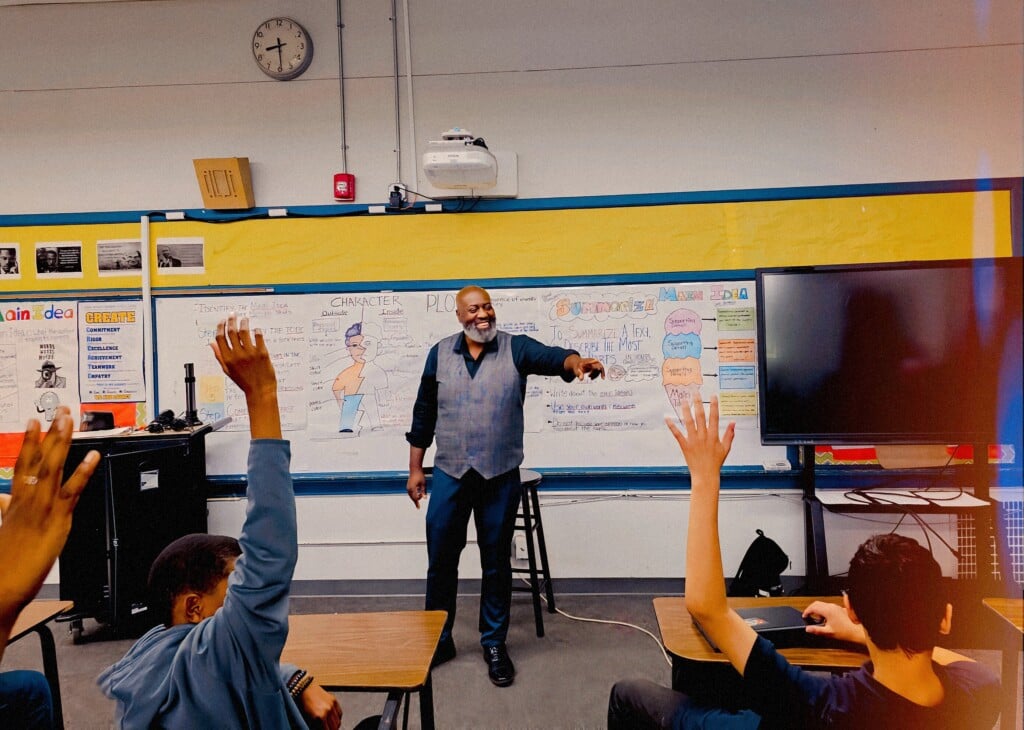Personalized Primary Science Tuition Singapore to Cater to Your Child’s Needs
Personalized Primary Science Tuition Singapore to Cater to Your Child’s Needs
Blog Article
A Comprehensive Guide to the Various Discovering Techniques in Primary Scientific Research Direction
The exploration of diverse discovering methods in key scientific research guideline offers a chance for educators to enhance student engagement and comprehension significantly. By checking out hands-on understanding strategies, inquiry-based strategies, and joint approaches, we can identify efficient practices that cater to various discovering designs.

Hands-On Knowing Techniques
Hands-on discovering methods play a critical duty in key scientific research direction, engaging trainees in energetic exploration and trial and error. These approaches enable learners to engage directly with materials and sensations, cultivating a much deeper understanding of scientific principles. By utilizing manipulatives, models, and real-life experiments, educators create an environment where students can observe, hypothesize, and check their concepts.
Such strategies not only improve comprehension but additionally cultivate crucial reasoning and analytical skills. When trainees join tasks like developing basic machines, planting seeds, or performing chain reactions, they are encouraged to ask inquiries and look for answers with their very own observations. This experiential technique aids to debunk intricate clinical principles, making them much more relatable and available.
Additionally, hands-on understanding promotes cooperation among peers, as pupils commonly operate in groups to conduct experiments or share findings. This team effort not only enhances their understanding experience however additionally develops necessary social skills. Eventually, incorporating hands-on techniques in main scientific research guideline fosters a long-lasting love of discovering and inquisitiveness about the natural world, laying a strong foundation for future scholastic pursuits in science and beyond.
Inquiry-Based Discovering
Inquiry-based learning is an educational method that encourages trainees to ask concerns, explore phenomena, and build their very own understanding of clinical concepts. This technique changes the focus from standard teacher-led instruction to an extra student-centered experience, where students take the effort in their academic trip. By cultivating inquisitiveness, inquiry-based learning advertises much deeper engagement with the product, permitting pupils to explore subjects in a purposeful context.
In practice, this technique frequently entails hands-on experiments, observations, and critical thinking activities that align carefully with the clinical method. Students are urged to formulate hypotheses, layout examinations, and evaluate information, which grows essential skills such as problem-solving and analytical reasoning. The function of the educator in this structure is to facilitate exploration, assisting pupils via the query process while motivating independent thought and partnership.
Furthermore, inquiry-based learning supports a sense of possession over the discovering procedure, inspiring pupils to pursue understanding actively. This approach not only boosts understanding of scientific principles but also fosters a long-lasting love for knowing, gearing up trainees with the abilities essential to navigate a significantly complicated globe.
Collaborative Discovering Approaches
Joint knowing methods equip students to involve in purposeful communications with peers, cultivating a shared obligation for their academic end results. In key science direction, these strategies encourage students to interact to discover scientific principles, fix issues, and perform experiments (primary science tuition Singapore). By taking part in group activities, trainees can utilize diverse point of views, allowing for richer understanding and retention of clinical knowledge
One key facet of joint understanding is the focus on communication skills. Students have to express their thoughts, pay attention proactively to others, and discuss concepts, every one of which are vital competencies in both academic and real-world contexts. This social communication not just improves their understanding of scientific concepts yet likewise advertises teamwork and conflict resolution skills.
In addition, joint discovering usually results in raised motivation and interaction. They are extra likely to take ownership of their knowing journey company website when trainees see the value of their contributions within a group. Teachers can promote this process deliberately structured team jobs that straighten with educational program objectives while giving advice on reliable cooperation methods. Generally, incorporating collaborative learning techniques in main scientific research direction cultivates a vibrant learning environment that prepares pupils for future scholastic and social difficulties.
Innovation Integration in Scientific Research
The assimilation of modern technology in main scientific research direction improves discovering experiences by providing cutting-edge tools and resources that support numerous teaching methodologies, consisting of collaborative discovering - primary science tuition Singapore. Making use of electronic systems, simulations, and interactive applications permits pupils to involve deeply with clinical ideas, facilitating a much more hands-on method to learning
Online laboratories, for example, make it possible for learners to perform experiments securely and effectively, advertising inquiry-based understanding. These tools can imitate real-world scientific circumstances, enabling pupils to picture complex procedures that would certainly be tough to replicate in a typical classroom setting. Moreover, technology cultivates communication and partnership amongst pupils, as they can share searchings for and interact on jobs with online systems.
Furthermore, multimedia discussions and educational video clips can improve lessons by dealing with varied knowing designs, making abstract ideas much more obtainable. Data analysis devices likewise empower pupils to gather and analyze scientific data, enhancing vital assuming abilities. Overall, the strategic consolidation of technology in primary science direction not just improves involvement however additionally prepares trainees for a technologically sophisticated society, outfitting them with important skills for future clinical undertakings.
Distinguished Direction Techniques
Distinguished instruction methods are essential for resolving the varied demands of students in key science education and learning. These approaches make it possible for educators to customize their training methods to fit varying capabilities, rate of interests, and learning styles within the classroom. By utilizing differentiated instruction, teachers can develop a comprehensive setting that fosters involvement and improves understanding of clinical ideas.
One efficient strategy is to make use of adaptable organizing, which permits trainees to team up with peers at comparable ability degrees or with differing perspectives. This approach encourages peer learning and advertises important thinking. In addition, offering choices in projects can empower click reference students, permitting them to select jobs that resonate with their interests while still fulfilling curricular objectives.
Moreover, including tiered projects is one more valuable technique. Deliberately tasks with varying levels of intricacy, teachers can make sure that all trainees are appropriately tested, no matter their efficiency. Making use of formative analyses imp source to determine comprehending more allows educators to readjust their instructional approaches dynamically, making sure that each student gets the assistance they need.
Ultimately, implementing set apart guideline methods in main science education not only enhances pupil learning results yet likewise cultivates a passion for science, preparing trainees for future academic quests.

Verdict
In recap, efficient primary scientific research guideline demands a multifaceted technique that encompasses hands-on knowing, inquiry-based approaches, and collaborative strategies. The assimilation of modern technology and set apart direction even more accommodates varied understanding styles, cultivating an atmosphere helpful to exploration and vital reasoning. By implementing these methods, instructors can boost pupil engagement and comprehension, ultimately nurturing a long-lasting interest for science and questions. Such extensive techniques are vital for creating notified and curious future researchers.
The expedition of varied discovering approaches in main scientific research instruction presents a chance for instructors to boost trainee interaction and understanding significantly.Hands-on knowing methods play a pivotal role in main science guideline, involving students in energetic exploration and experimentation.Inquiry-based knowing is an instructional strategy that motivates students to ask questions, investigate phenomena, and build their own understanding of scientific ideas.Joint understanding approaches equip pupils to involve in significant communications with peers, fostering a shared responsibility for their instructional results. On the whole, including collaborative knowing approaches in main scientific research instruction grows a vibrant knowing environment that prepares pupils for future scholastic and social difficulties.
Report this page